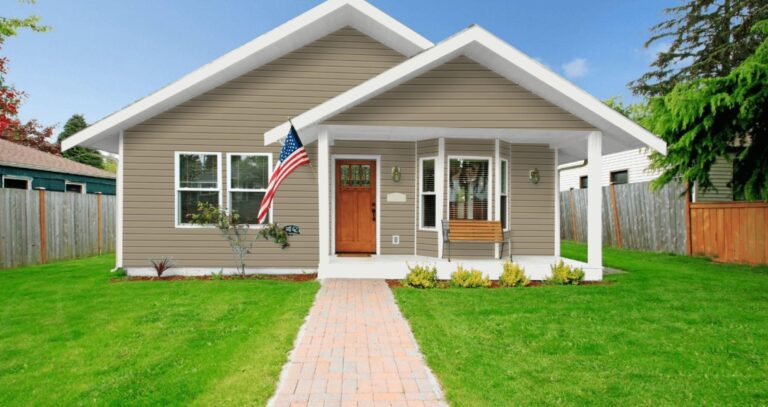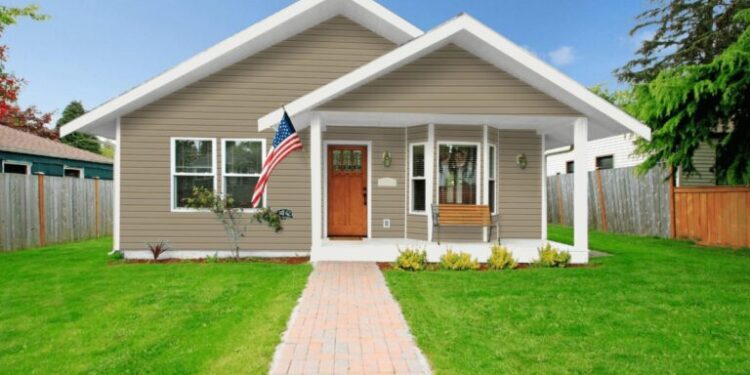
Embark on a journey of revamping your home with a siding remodel. From exploring various materials to understanding costs and installation processes, this guide has everything you need to know.
Types of Siding Materials
When it comes to siding materials for remodel projects, there are several options to choose from. Each type of material comes with its own set of pros and cons, making it essential to consider factors like durability and maintenance requirements.
Vinyl Siding
- Pros: Affordable, low maintenance, comes in various colors and styles.
- Cons: Prone to cracking in extreme weather conditions, can fade over time.
Wood Siding
- Pros: Natural look, environmentally friendly, can be painted or stained.
- Cons: Requires regular maintenance like painting or staining, susceptible to rot and insect damage.
Fiber Cement Siding
- Pros: Durable, fire-resistant, low maintenance, resistant to rot and insects.
- Cons: More expensive than vinyl or wood, requires professional installation.
Metal Siding
- Pros: Very durable, fire-resistant, low maintenance, can mimic the look of other materials.
- Cons: Can dent or scratch easily, may require repainting over time.
Popular siding styles for modern homes include horizontal lap siding, board and batten, and metal panels. For traditional homes, options like cedar shake, dutch lap siding, and scalloped shingles are commonly used.
Cost Considerations

When planning a siding remodel project, it is crucial to consider the cost implications. The total cost of a siding remodel project is determined by various factors, including the quality of materials used, labor costs, and the scope of the project.
By understanding these key cost considerations, you can effectively budget for your siding remodel and ensure that the project stays within your financial constraints.
Factors Influencing Cost
- Material Quality: The type and quality of siding material chosen will have a significant impact on the overall cost of the project. High-end materials like cedar or fiber cement will be more expensive compared to vinyl or aluminum siding.
- Labor Costs: The cost of labor for the installation of siding can vary depending on the complexity of the project and the expertise of the contractors. Labor costs can make up a significant portion of the total project cost.
- Project Scope: The size of the project, the number of stories in the house, and any additional features like trim work or intricate designs will all influence the overall cost of the siding remodel.
Breakdown of Typical Costs
| Siding Material |
Cost Range per Square Foot |
| Vinyl |
$3
$7
|
| Wood (Cedar) |
$6
$10
|
| Fiber Cement |
$5
$12
|
| Aluminum |
$4
$8
|
Tips for Effective Budgeting
- Get Multiple Quotes: Obtain quotes from different contractors to compare prices and ensure you are getting a fair deal.
- Plan for Contingencies: Set aside a buffer in your budget for unexpected costs that may arise during the project.
- Consider Long-Term Costs: While upfront costs are important, also factor in the long-term durability and maintenance requirements of the siding material.
- DIY vs. Professional Installation: Evaluate whether you have the skills and tools to install the siding yourself or if hiring a professional would be a better investment in the long run.
Siding Installation Process
Installing new siding on a home involves several key steps to ensure a successful and long-lasting outcome. From preparation to finishing touches, each stage plays a crucial role in the overall process.
Preparation and Planning
Before starting the installation, it is essential to carefully plan the project
. This includes measuring the area to be covered, selecting the appropriate siding material, and ensuring all necessary tools and equipment are on hand.
- Measuring tape
- Level
- Hammer
- Nails or screws
- Saw or snips
- Caulk and caulking gun
- Safety gear (gloves, goggles, etc.)
Installation Process
Once the preparation is complete, the actual installation process can begin. This typically involves removing the old siding, preparing the surface, cutting and fitting the new siding pieces, and securing them in place.
- Remove old siding carefully to avoid damage to the underlying structure.
- Inspect the wall for any damage or rot that needs to be repaired before installing new siding.
- Cut the new siding to the appropriate size and shape, ensuring a proper fit.
- Secure the siding in place using nails or screws, following the manufacturer's guidelines.
- Apply caulk to seal any gaps and prevent moisture from penetrating behind the siding.
Common Challenges and Solutions
During the installation process, some common challenges may arise, such as uneven walls, weather conditions, or structural issues. To overcome these challenges, it is important to address them proactively.
- Use a level and shims to correct any uneven walls before installing the siding.
- Work during favorable weather conditions to prevent damage to the siding or delays in the project.
- Consult a professional if structural issues are discovered that may impact the siding installation.
Best Practices for Long-Lasting Results
To ensure a successful and long-lasting siding installation, it is important to follow best practices throughout the process. This includes proper preparation, careful installation, and regular maintenance.
- Choose high-quality siding materials that are durable and resistant to weather and pests.
- Follow the manufacturer's guidelines for installation to ensure proper fit and performance.
- Inspect the siding regularly for signs of damage or wear and make repairs as needed to prevent further issues.
Energy Efficiency and Insulation
When it comes to siding remodel projects, considering energy efficiency and insulation is crucial for maintaining a comfortable indoor environment and reducing energy costs. The choice of siding material and the level of insulation play a significant role in the overall thermal performance of a home.
Impact of Siding Material on Energy Efficiency
- Some siding materials, such as vinyl and fiber cement, offer better insulation properties than others like wood or metal.
- Choosing a siding material with high thermal resistance can help reduce heat transfer, keeping your home cooler in the summer and warmer in the winter.
- Energy-efficient siding can lower heating and cooling costs, leading to long-term savings on energy bills.
Role of Insulation in Thermal Performance
- Insulation placed behind the siding helps regulate indoor temperatures by preventing heat loss in the winter and heat gain in the summer.
- Proper insulation can also reduce air leakage, improving the overall energy efficiency of the home.
- Consider the R-value of insulation, which indicates its thermal resistance - the higher the R-value, the better the insulation performance.
Selecting Energy-Efficient Siding Options
- Look for siding materials with built-in insulation or the option to add additional insulation layers for enhanced energy efficiency.
- Consider insulated vinyl siding, fiber cement siding, or engineered wood siding for optimal thermal performance.
- Consult with a professional to determine the best siding material and insulation type based on your climate and budget.
Maximizing Insulation Benefits during Installation
- Ensure proper sealing and flashing around windows, doors, and corners to prevent air leaks and moisture infiltration.
- Add a continuous insulation layer under the siding to minimize thermal bridging and improve overall energy efficiency.
- Consider upgrading windows and doors for better insulation performance in conjunction with new siding installation.
Final Summary
In conclusion, a siding remodel can breathe new life into your home, enhancing its aesthetics and functionality. With the right choices and considerations, you can achieve a stunning transformation that lasts for years to come.
Clarifying Questions
How do I choose the right siding material for my remodel project?
Consider factors like durability, maintenance requirements, and aesthetic appeal to select the best siding material for your home.
What are some common challenges during siding installation?
Issues like weather delays, structural repairs, or working around obstacles can pose challenges during the siding installation process.
Is it possible to increase energy efficiency through siding remodel?
Absolutely. Choosing energy-efficient siding materials and ensuring proper insulation can significantly enhance the energy efficiency of your home.
 Embark on a journey of revamping your home with a siding remodel. From exploring various materials to understanding costs and installation processes, this guide has everything you need to know.
Embark on a journey of revamping your home with a siding remodel. From exploring various materials to understanding costs and installation processes, this guide has everything you need to know.
 When planning a siding remodel project, it is crucial to consider the cost implications. The total cost of a siding remodel project is determined by various factors, including the quality of materials used, labor costs, and the scope of the project.
By understanding these key cost considerations, you can effectively budget for your siding remodel and ensure that the project stays within your financial constraints.
When planning a siding remodel project, it is crucial to consider the cost implications. The total cost of a siding remodel project is determined by various factors, including the quality of materials used, labor costs, and the scope of the project.
By understanding these key cost considerations, you can effectively budget for your siding remodel and ensure that the project stays within your financial constraints.













